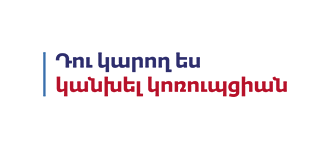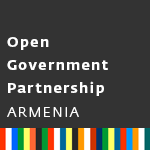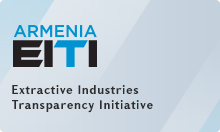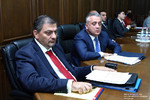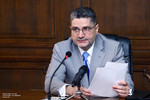Monday, 24 September 2012
Republic of Armenia Prime Minster Tigran Sargsyan’s statement at National Assembly on 2011 State budget performance results
Honorable National Assembly Speaker,
Dear Chairperson,
Dear Colleagues,
I am introducing to you the results of the 2011 State budget performance and some important features concerning the budget performance. My colleagues will come up with a more detailed statement on the 2011 budget performance during which they will answer your questions.
While talking about the State budget performance, first of all, we must consider the overall economic environment under which the budget was implemented and, secondly, we should take note of those economic results improved thanks to targeted fiscal policy.
From this perspective, the year 2011 can be characterized as one of strengthened economic recovery, since the trends of 2010 represented serious challenges against the background of general economic climate and it can be stated now that we managed to usher in a stage of economic recovery in 2011.
As you may know, due to a number of supply-related factors we faced a highly inflationary environment in late 2010, with 9.4 percent inflation recorded by yearend. As Armenia used to keep inflation below the mark of 3% during pre-crisis period, the threefold higher inflationary pressure, which was not typical to our country, created serious obstacles to economic growth and social serious problems.
From this perspective, in 2011 on the one hand, we were obliged to implement a fiscal policy conducive to lower inflation, while on the other hand, we had to implement a targeted industrial policy, supposed to ensure continued and sustainable economic growth. In this regard, we can say that the year 2011 proved to be a turning point as inflation went down significantly and we had economic growth twice higher than in 2010.
Moreover, it is important that during these years we were able to sharply improve revenue collection performance and the tax / GDP ratio, providing a solid groundwork for a 0.6 percent rise in the tax / GDP ratio all the way through the year 2012, which was one of our most important goals.
The annual macroeconomic indicators allow us to state that we managed to overcome the major challenges, taking inflation from its highest point of March 2011 (11.6%) down to 4.7 % by yearend. At the same time, we boasted a 4.7% economic growth, which was twice higher than in 2010.
In 2011, industry showed a high growth rate, recording an increase of 13.5 % over the previous year. We did better than in 2010, when the growth was only 9.2 %. Thus, 2.1 percentage points were added to the overall growth rate. The stated rise in industry was due the measures implemented by the government toward boosting exports. At the same time, it should be noted that we enjoyed a favorable environment in the global markets.
8.5 % of the growth came on processing industry, including food, beverages, metal processing. 22.5 percent growth recorded in the mining industry, to the common industrial growth by 3.8 percentage points.
As a result, in late 2011, the share of industry in GDP was 16.2% versus 13.3% pre-crisis 2008.
This figure clearly shows that in Armenia there is a diversification of the economy in favor of more productive industries.
In agriculture, after the unprecedented downturn in 2011 recorded 13.7 percent growth, and economic growth, agriculture contributed 2.3 percentage point, feeling the impact of a favorable climatic conditions, and government-initiated programs aimed at stimulating agricultural especially crop.
In particular, you may know that in 2011 the Government launched a program of subsidizing interest rates on loans to ensure the implementation of the chain of agricultural products, seed and seed production of wheat and barley, the development of local production of bio-fertilizers, agricultural equipment retooling. As a result, crop growth was 26.6%, mainly providing the bulk of the annual agricultural growth.
This high growth made it possible to simultaneously address two problems: easing inflationary pressures, most of which arose as a result of high prices due to reduced supply of agricultural products in the previous year and, secondly, to achieve revenue growth in the field of agriculture and recovery in the GDP share of industry. It should be noted that the share of agriculture in GDP from 16.3% in the pre-crisis in 2008 reached 20.3% at the end of 2011.
As for services, either they boasted a 5 % growth as compared to the previous year’s 4.1 per cent growth: This sector continues to be the driving force of our economy, with a 2.0 % share in the overall 4.7 % growth :
In the external sector, too, we had some positive achievements. In 2011, stimulating the growth of the export sector, we were able to state improved export performance in both industrial and agricultural sectors. Export growth proved higher than import growth, and here we had an increase of over 34%, which helped improve the country’s trade balance, bettering in turn the current account balance.
The current account deficit fell by about 4 percentage points, which is a promising indicator, since it is associated with the rise in exports rather than remittances. As a result, the share of exports of goods and services in GDP continued to grow during the year reaching the mark of 24%. If we compare it with the pre-crisis level of 15.1 percent, we can see that 8.6 % improvement was achieved over the last 3 years.
The fiscal policy of 2011 could be described as balanced since it built on the policy of gradual cutback in the budget gap - a process that provides debt sustainability and fiscal consolidation to promote discipline, but on the other hand, we should note that this moderately consolidated fiscal policy has not been an impediment to economic recovery.
In 2011 the budget deficit to GDP amounted to 2.8% of the planned 3.9%, recording a 4.8% ease from the 7.6 % of 2009. It is important that all of this has been possible due to the improvement in tax revenues. Taxes, inclusive of social contributions, grew 11.1% over the previous year, and the tax / GDP ratio improved by 0.4 percentage points to reach the mark of 20.6 %.
As regards the total revenue, here the growth was 12.9 percent, along with a 23.3% increase in the taxes/GDP ratio, which is 0.8 percentage points more than in the previous year and 0.4% greater as compared to the planned target mainly due to additional grants. Despite the policy of fiscal consolidation, budget expenditures increased by 3.4 percent last year mainly due to the growth in spending in the welfare, healthcare, educational and social protection sectors (6.9%). The foregoing accounted for a 2.9% contribution to the 3.4 percent increase in budget expenditures.
All the way through the financial crisis, we managed not only to maintain but also to raise the level of welfare spending, as a result of which the share of the latter in GDP exceeded the government target in 2011 by 0.5% to 6.7%.
Social protection expenditure rose by 4.9 percent in 2011, mainly due to the increase in the base pension rate (AMD 10 500 from AMD 8000) as of November 1, 2010.
Benefits, too, were improved in 2011 to enhance program targeting and provide the tools necessary for getting online information.
As an anti-corruption highlight, we should mention the exposure in 2011 of a number of abuses in the pension system which was made possible through close monitoring and inspections. As a result, responsibility and targeting was enhanced in this sphere, leading to considerable financial savings.
Healthcare spending increased by 12.8%, with a special focus placed on the mother and child’s care. We pushed ahead with the government’s State-certification program in obstetrics. As a result, positive trends were recorded both in service quality indicators and in terms of improved access to such services.
From January 1, 2011, the institute of public health certificate was introduced in the healthcare system and in-patient care became more affordable for children up to 7 years. Our preliminary and running surveys evidence a decline in informal payments by over 4-5 times.
Education spending increased by 8.5 percent in 2011, targeting the following priority areas: accessibility of preschool education, educational reform, pre-professional (vocational) education development, as well as the improvement of higher education.
In 2011, the process of forming a separate network of high schools was completed. A number of initiatives were implemented to improve the quality of vocational education. They were devised to meet the labor market requirements and strengthen the personnel training capacity in accordance with the European standards.
It is clear that the implementation of said activities ought to be matched with the reform of business environment.
The Government’s steps were firstly aimed at the simplification of company registration rules: we established a center to provide “one-stop-shop” services, enabling company registration within some 15 minutes, including via the Internet.
The profit tax advance payment and minimum profit tax settlement items were reduced by 8, the property tax and land tax payments by two and the number of returns of mandatory social payments by 8. We extended the ban on inspections with those economic entities having a turnover of up to 70 million drams.
In foreign trade, the mandatory certification process is carried out after the clearance and before the sales. The confirmation of the type of measurement tools is performed after clearance and before the sales or the use of goods. The deadlines and costs set for the receipt of certificates of origin have been reduced. An electronic system has been introduced for customs declarations along with a system of risk management in the field of customs control.
In the field of construction permits for facility design specifications issued by implementing engineering maintenance services, developers are given together with the architectural design task by issuing the architectural design task.
Application of treaties: the Judicial Acts Compulsory Enforcement Service has introduced a system of electronic auctions. DataLex public information system was put into operation to ensure online availability of a range of services in the judicial sphere.
The Central Bank of Armenia adopted a number of legal acts, which are aimed at ensuring privacy of loan-related information provided to lending entities, the licensing of credit bureaus, as well as providing for enhanced access to credit information.
In terms of investor protection, the Law of the Republic of Armenia “On amendments to the law of the Republic of Armenia on joint stock companies” has been adopted.
The Government approved a timetable for the introduction of corporate governance rules in companies with 50% and over State participation.
As a result of legislative changes made in the area of property registration, provided facilitation of State registration of ownership, transfer of private traders accounting features (measurements), the introduction of a simplified procedure, the conclusion concerning the property of individual transactions.
In 2011 we continued implementing the program of State support to SMEs, under which assistance was provided to some 3580 entities.
The Accounting Center remained in activity, assisted by the State, offering low-cost standardized services to small and medium enterprises. Led by the Prime Minister, a council for SME development is up to discuss issues of concern to entrepreneurship and implement measures toward improved business environment.
In the field of infrastructures, energy and natural resources, we have increased Armenia’s power generation capacity, building new infrastructures and upgrading the existing ones.
In the framework of regional integration and technical re-equipment of electric power systems activities have been carried out to build 400 kV-strong Iran-Armenia and Georgia-Armenia power transmission lines and reconstruct the existing 220 kV Hrazdan-Shinuhair line.
As part of the work to continually improve Armenia’s water management system, I should mention the following achievements.
In particular, using funds saved as a result of construction tenders, sewage network rehabilitation programs have been carried out in the cities of Ghawar, Martuni, Vardenis, Sevan. Sewerages to a total length of 11.5 km and wastewater treatment plants will be completed in 2012.
AMD 3,3bn worth of emergency upgrades were carried out at an Arpa-Sevan tunnel section in the period under review, tackling thereby important threats to the safe operation of the tunnel.
Also, there have been carried out drain cleaning and deepening activities to a total length of 432 km, cleaning and deepening of 300 km-long secondary and tertiary dryers, clearing of 130 kilometers of drainage systems.
Reforms have been implemented in terms of mandatory technical inspection of vehicles, which has been simplified and liberalized. Competitiveness has been enhanced in this field.
In 2011, the volume of rail freight traffic increased by about 6.2% to 3 million 252 thousand tons. Exported goods increased by 30%, while inland traffic rose by 12.2%. At the same time, the volume of imported goods fell by 5 2%.
ArmenTel, NK-Telecom and Orange Armenia telecommunication operators are providing 2G and 3G Internet services. Last year the 4G technology was tested for the first time in our country, making of Armenia a regional leader among the CIS countries.
As a result, we managed to significantly increase the number of up-to-date web service users, enhance the coverage (up to 99%) and quality of such services, as well as to reduce the tariffs.
Dear colleagues,
The Ministry of Finance will present you a more detailed report for the year 2011. The heads of government agencies have prepared detailed analyses and reports and stand ready to answer your questions.
In conclusion, I would like to note that the foregoing positive developments have been made possible through our ability to co-operate with the National Assembly toward making such legislative amendments as might improve the overall economic environment and help us meet the 2011 State budget targets.
Thank you for attention.

